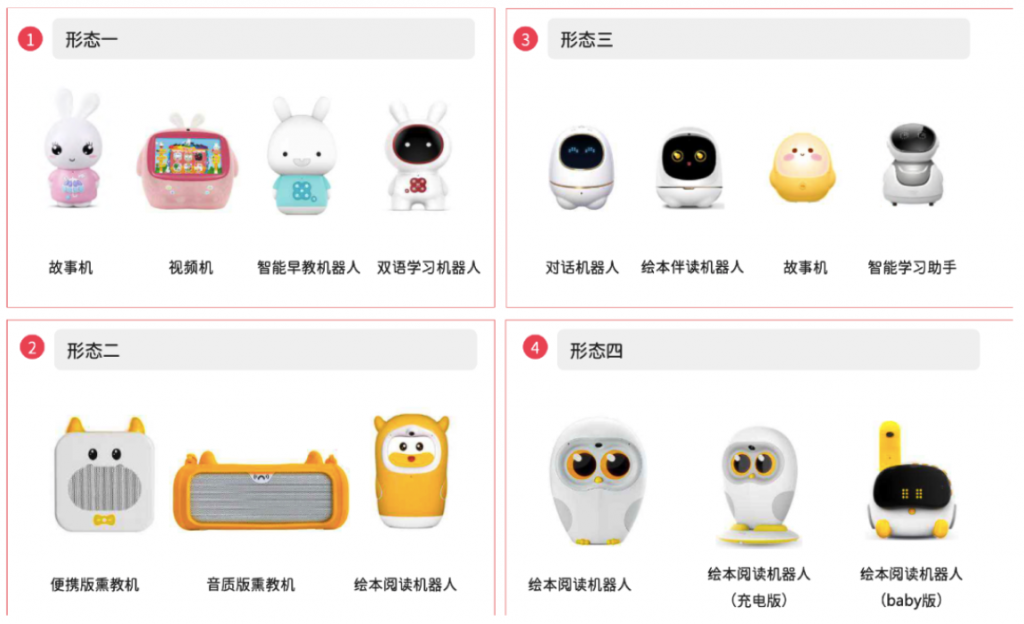Written by Bin Tong, 2020 Cohort
A) Digital Media for Preschool Kids in China
Preschools, also known as nursery schools, are the educational institutions for children before they begin compulsory education. The preschool education industry is not doing well in recent years, due to the drop in the birth rate in China. Meanwhile, it is also regulated strictly because of several preschool scandals that have happened in recent years. Another trend is adopting digital media technology to improve the education system.
According to App Growing, preschool apps focus on content such as math, mind cultivation, coding, reading, picture books, stories, etc.

Some of those apps generate revenue from the content and courses, and others accumulate users by giving away free content and profit from in-app advertisements.
Educational robots are the other forms of popular digital products which kids can talk to. Through Voice Recognition and Natural Language Processing technology, these robots are able to respond to kids’ questions. Although the form factors of robots are various, the core functionalities are almost the same. Therefore, the competition in this niche market is fierce due to the homogeneity.
Picture books are still the most popular form for preschool children. Parents not only buy physical books for their kids but also turn to digital books which are more accessible nowadays.
Publishers are taking advantage of all the mainstream digital platforms including App Store, WeChat Mini Program and Official Accounts.
Overall, there are more and more products for preschool kids in this digital era. But no matter how much technology has changed our lives, the content still goes first. Picture books are not outdated and are still the most popular products for children. They just get digitized and serve in a different way.
Source: The Investment Report for Chinese Education Industry, 2019
B) Digital Media for K-12 Students in China

The school system in China is so competitive that the vast majority of Chinese parents spend thousands of USD per year on after-school tutoring for their children, and a quarter of them even spend six digits, even more than the average American parents do. Meanwhile, only about 10% of the students will get into the four-year bachelor’s degree program in China, compared to one-third in the US. The education in China, especially during the K-12 period (aka. prior to college), is very exam-focused. Everything is about getting higher scores in the college entrance examinations.
K-12 education includes interest courses, offline/online tutoring classes, AI tutoring tools and a Two-teacher Classroom.
You probably can guess that after-class tutoring is the most profitable segment in this industry. It is so difficult for students to rise to the top that many of them have to take extra lessons. Mandatory courses including English, Maths and Chinese Language steal almost all the thunder among the others.
Online education has been growing significantly during the pandemic.
Genshuixue, an online tutoring company valued at 5 billion USD has adopted 15 million new users during the pandemic, five times more than last year.
Some other online education institutions also changed paid courses to free to attract new users. Traditional onsite schools were temporarily closed due to Covid-19, but students had to continue their studies.

On the other hand, online education brings after-school tutoring to less developed areas in China, where the teaching resources are scarce compared to bigger cities. One celebrity teacher can tutor thousands of students at one time regardless of the location, resulting in more accessible and affordable education, which costs only about 50% of the traditional tutoring.
Chinese parents spend 75 billion USD a year on K-12 and vocational learning for their kids, but only 10% of classes are taken online currently.
The potential market is huge but remains unclear, considering almost all of the online educational institutions are spending more money than earning, and the retention rate is much lower than traditional tutoring institutions. But at least, tutoring resources are being distributed more evenly and affordably through live-streaming technology.
Source: K12 Online Curriculums Tutoring Market Report; K12 to B Report, by Zhiniao Education; Chinese K12 English EdTech: VIPKid and How Learning is Earning; Getting educated on China K-12 tutoring ed-tech.